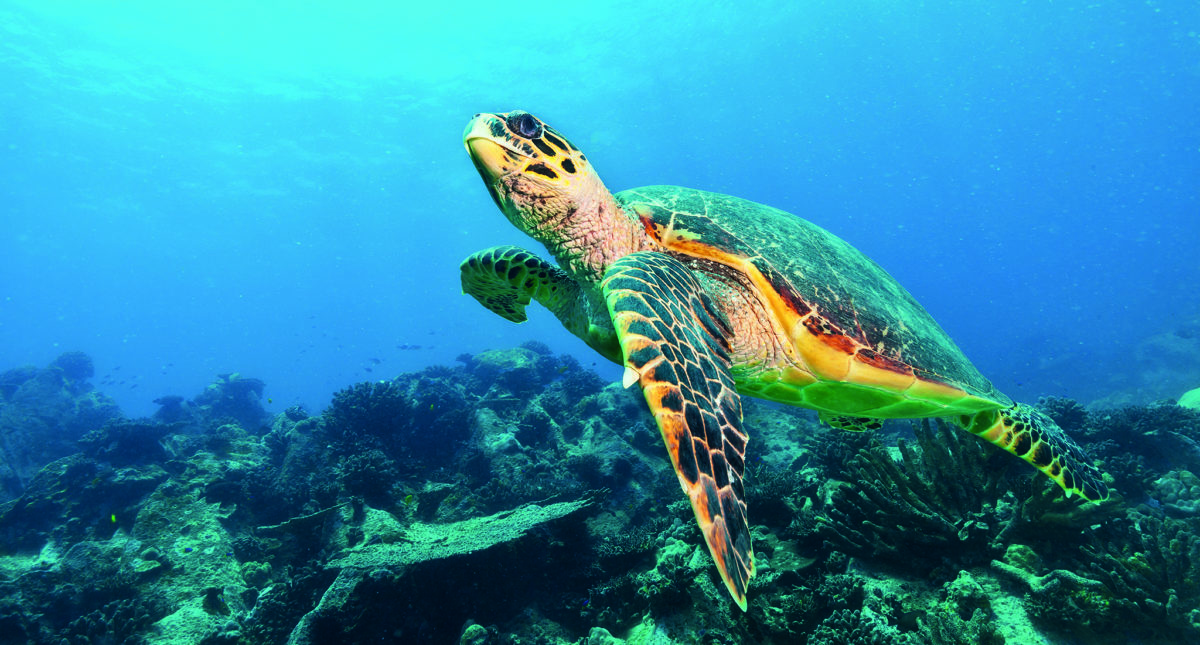
Strict conservation measures have allowed over-fished green turtles to recover
By Geographical Staff
Green sea turtles, whose global population is categorised as endangered and declining by the IUCN Red List, are thriving once again in the Seychelles, following 50 years of conservation efforts.
Once considered a delicacy, fated for soup tureens on European banquet tables during the 18th and 19th centuries, they were hunted to near-extinction in parts of the western Indian Ocean.
However, in 1968, after surveys revealed no nesting activity whatsoever on isolated Aldabra, the largest atoll in the Seychelles, the area was designated a nature reserve. Green Turtle Protection Regulations were implemented throughout the territory and, in 1982, Aldabra Atoll was selected as a UNESCO World Heritage Site on the basis of its protected island ecosystem.
Since then, researchers monitoring the recovery of the turtles have revealed that the local breeding population, which has remained protected from human influence, has since increased by roughly 500 per cent. The atoll is now the site of the second-largest green turtle breeding population in the western Indian Ocean.
Scientists have been tracking the turtles’ recovery since the 1970s, including frequent surveys of the atoll’s two kilometre settlement beach to count the number of turtle tracks from the previous night. Between 1980 and 2019, 44,000 turtle track surveys recorded a total of 128,000 turtle tracks, altogether revealing an estimated 2.6 per cent annual growth rate in nest numbers.
Today, between 3,000 and 5,000 female turtles are thought to be nesting each year at Aldabra. Prior to the atoll’s exploitation, it was estimated that as many as 8,000 female turtles were nesting every year, indicating that these numbers could well continue to grow in the future.




